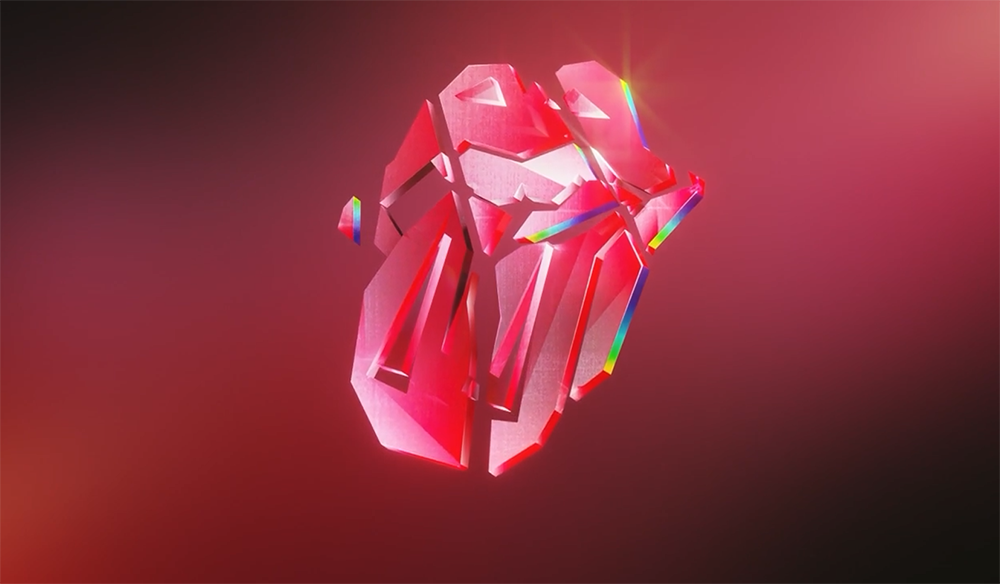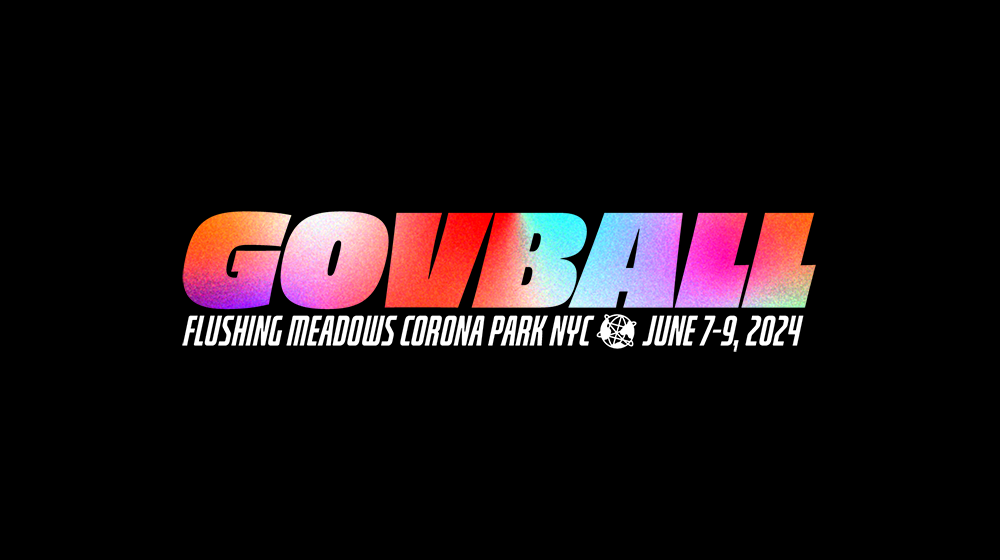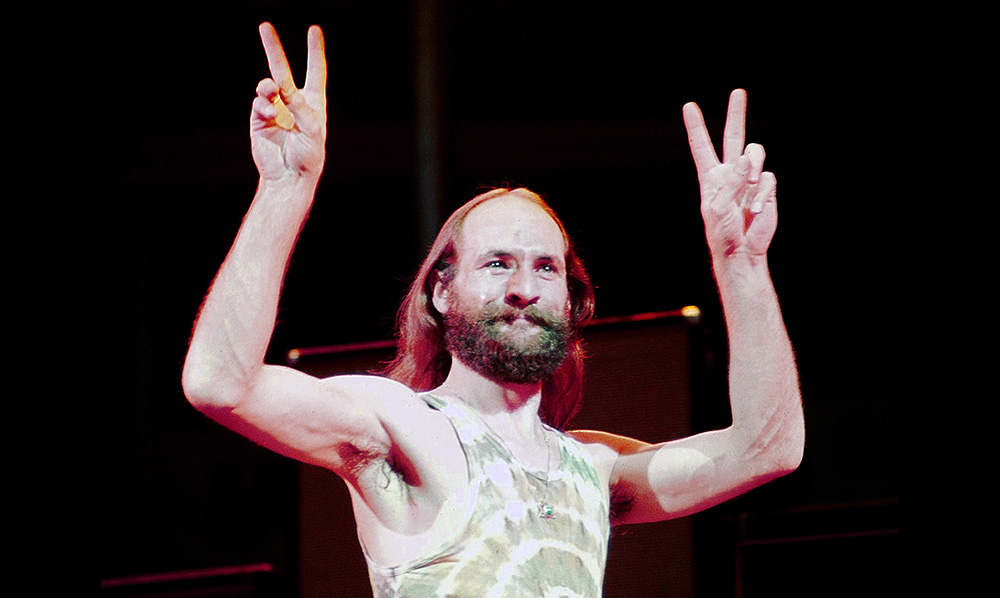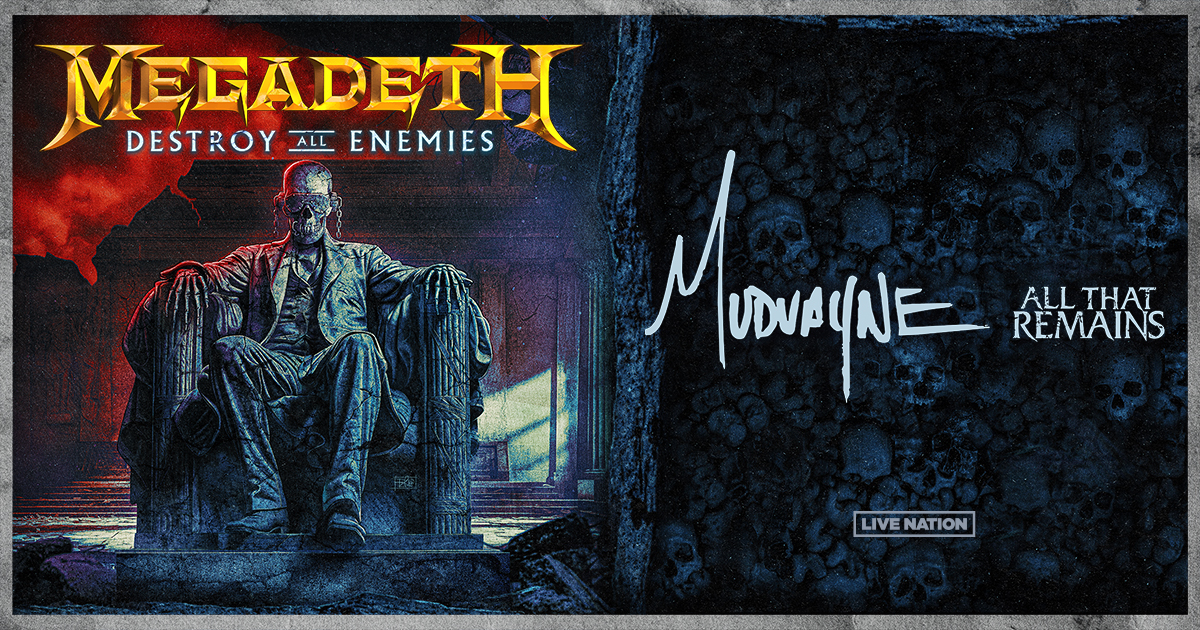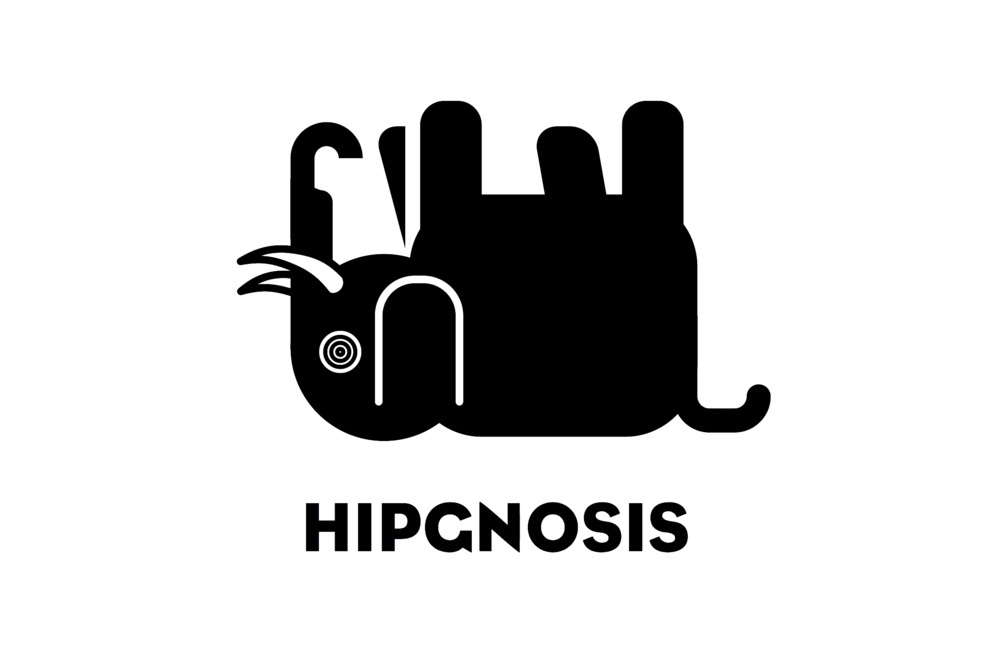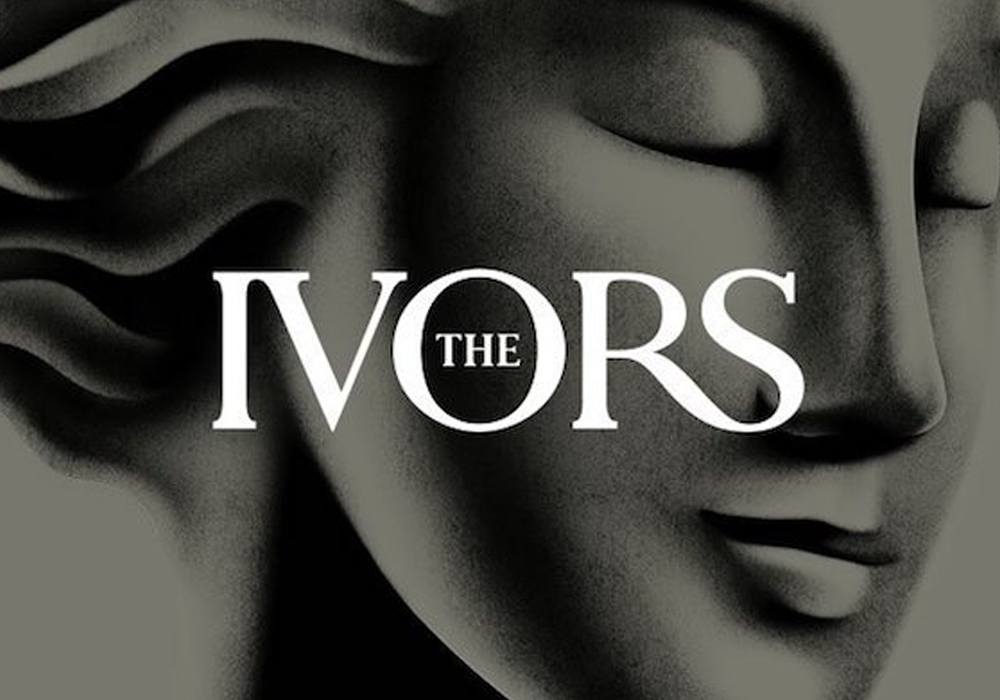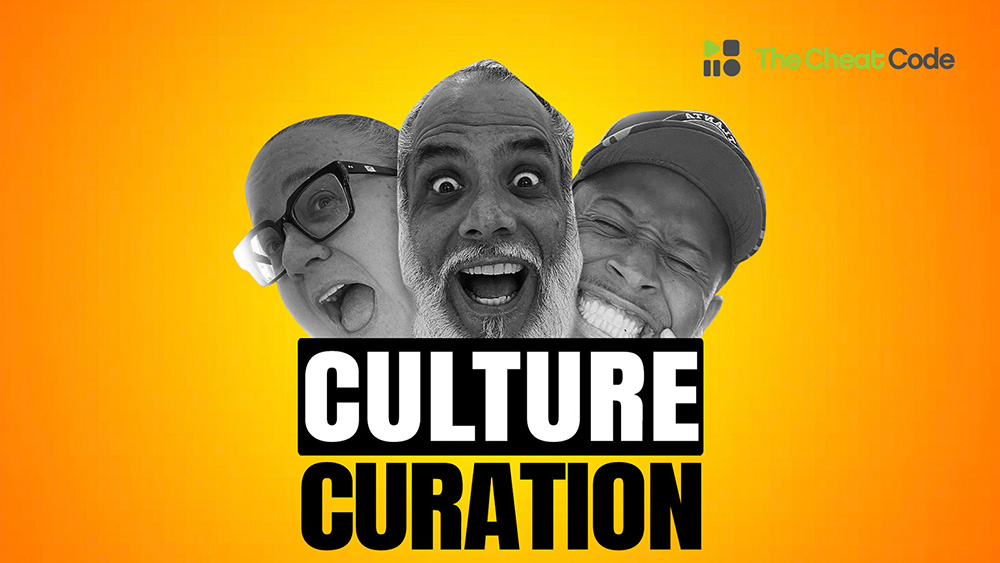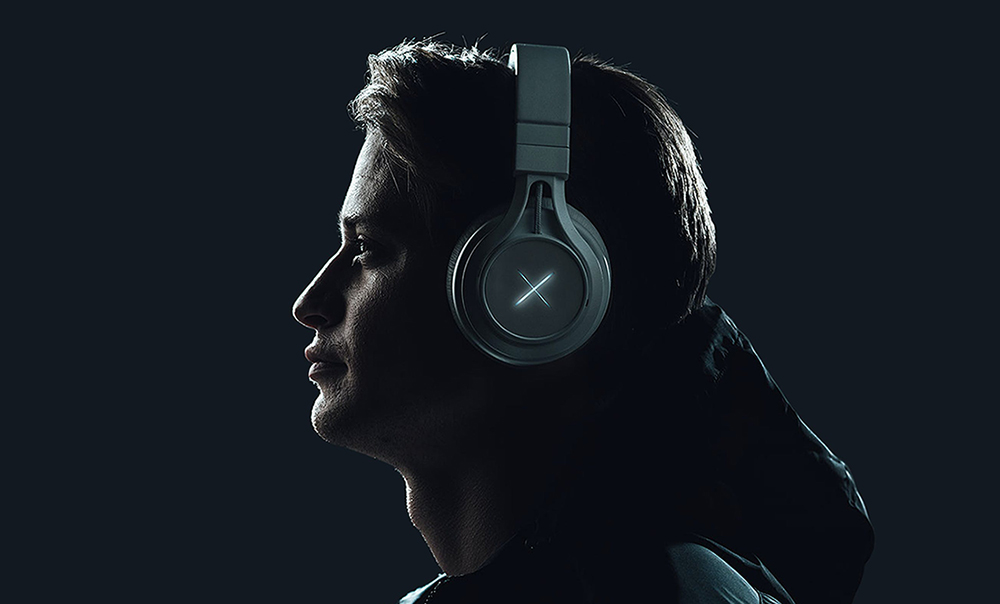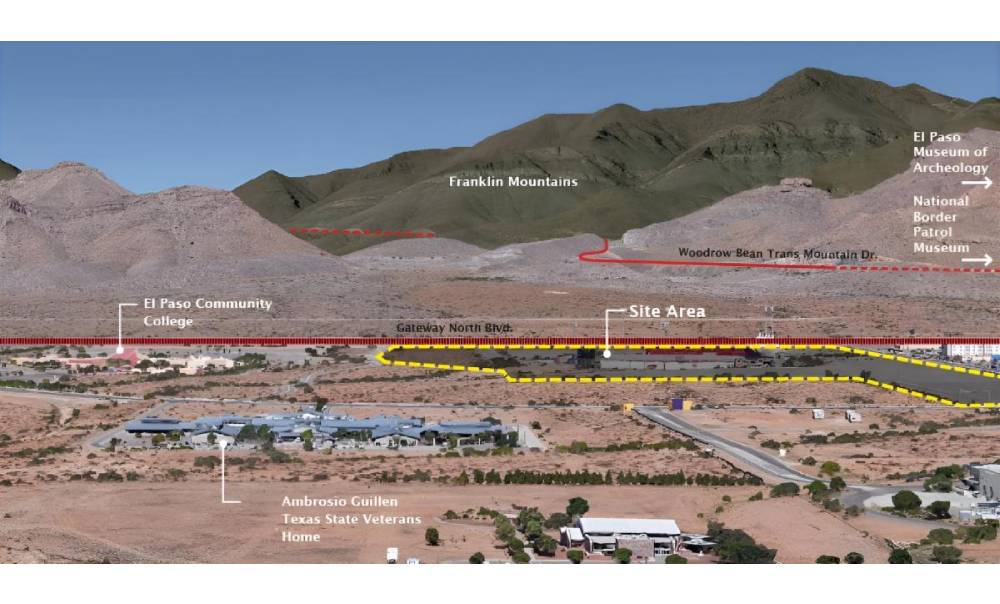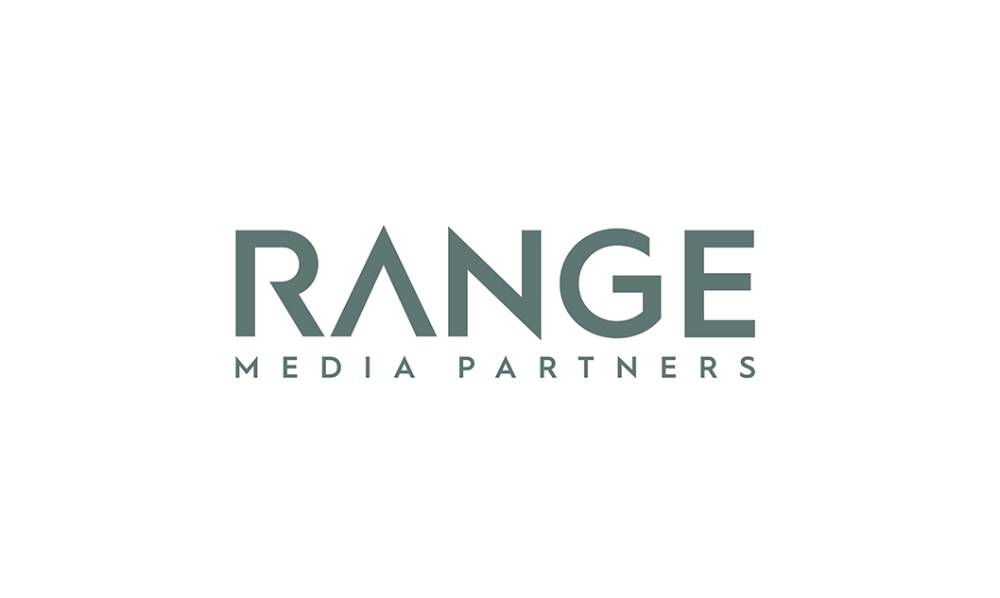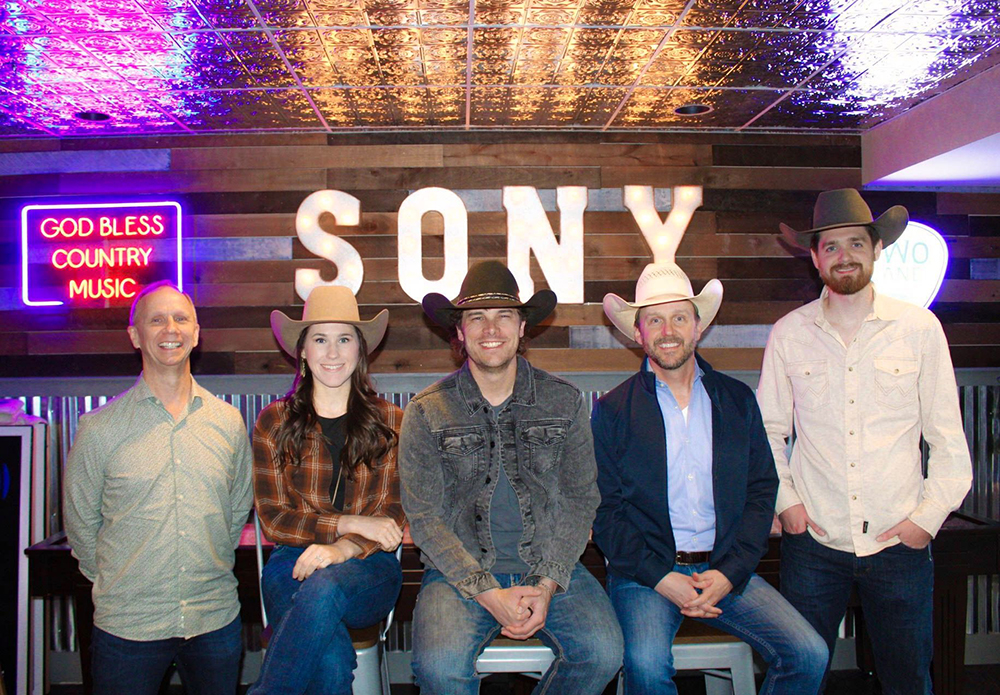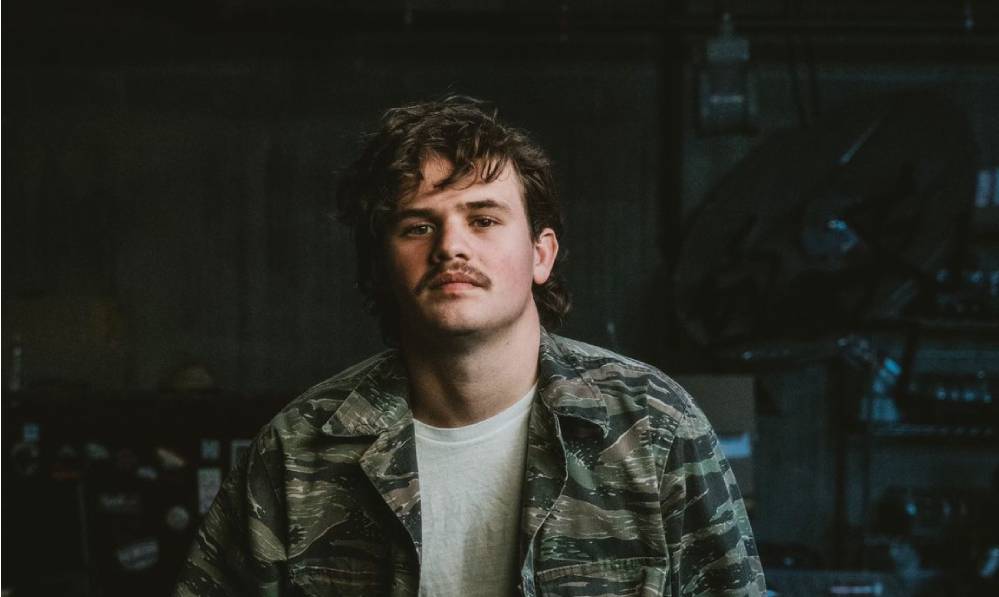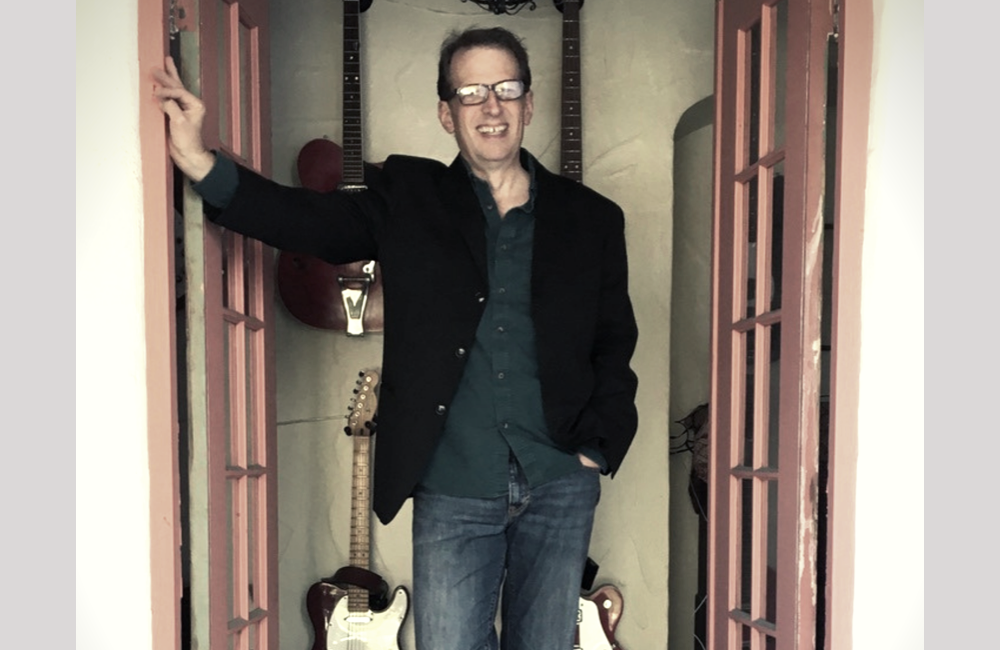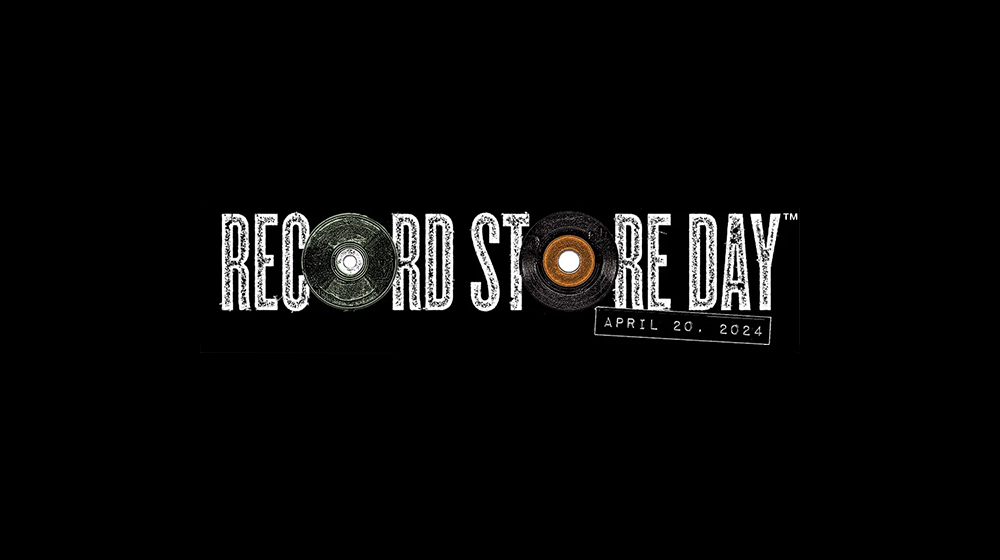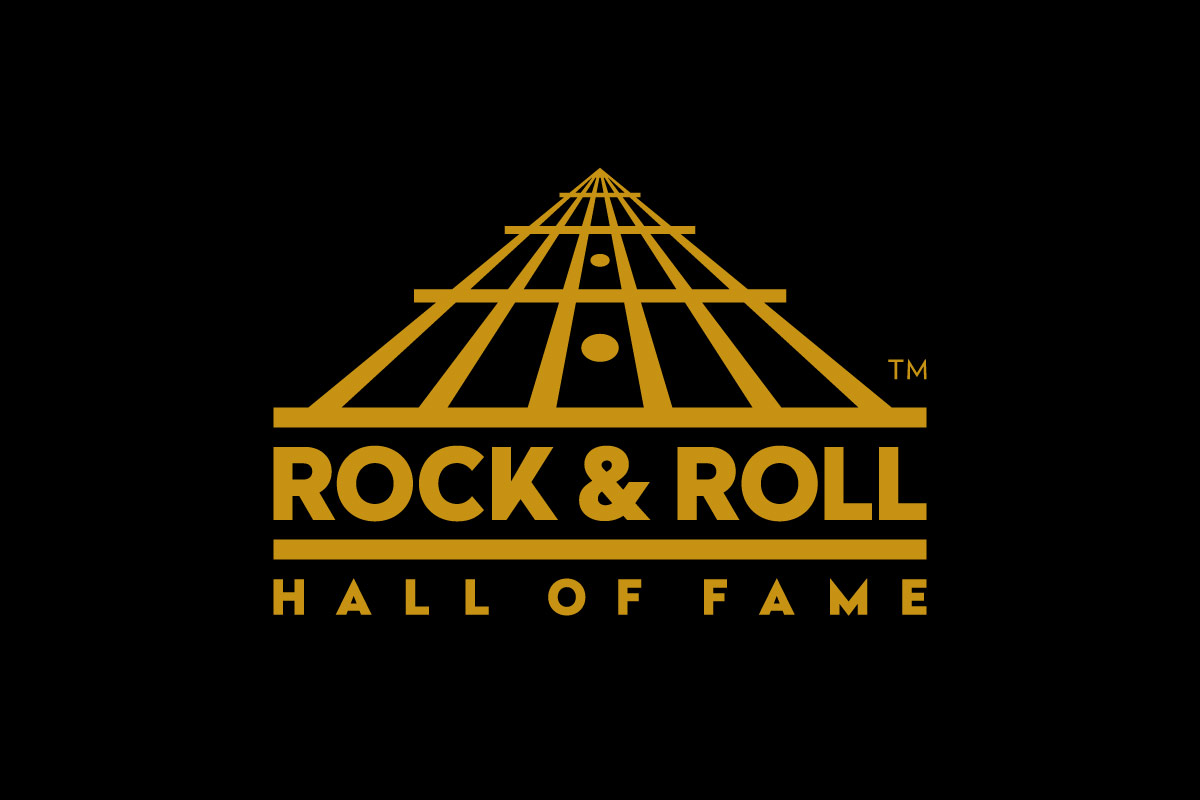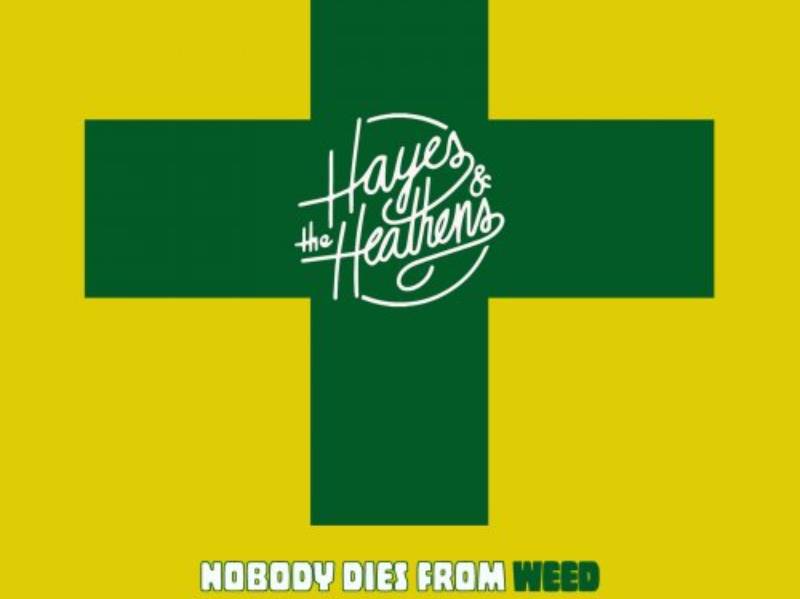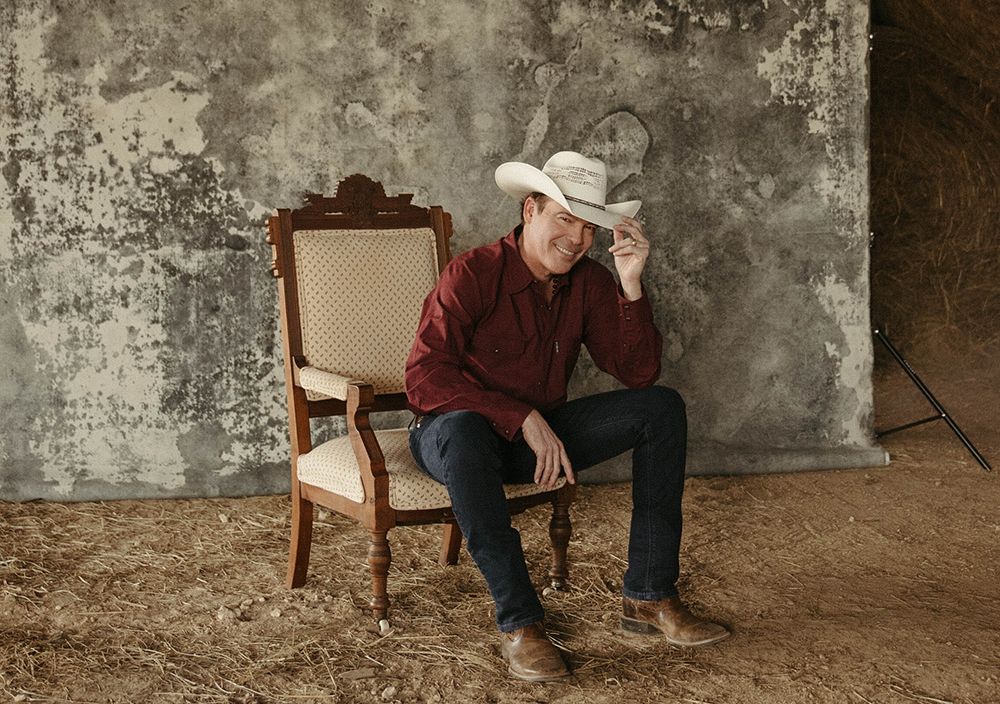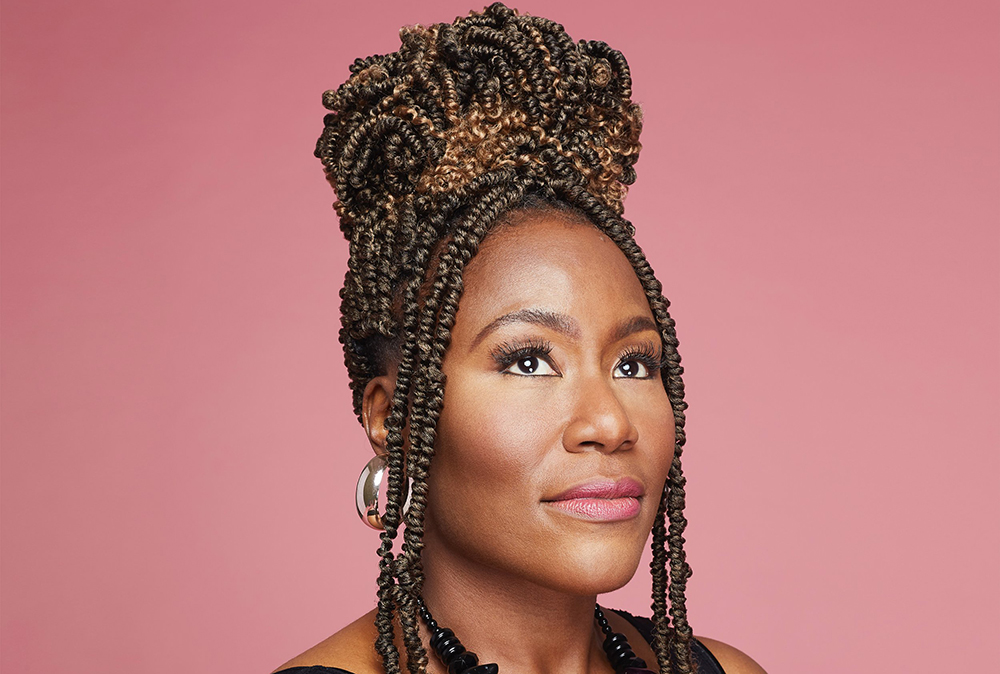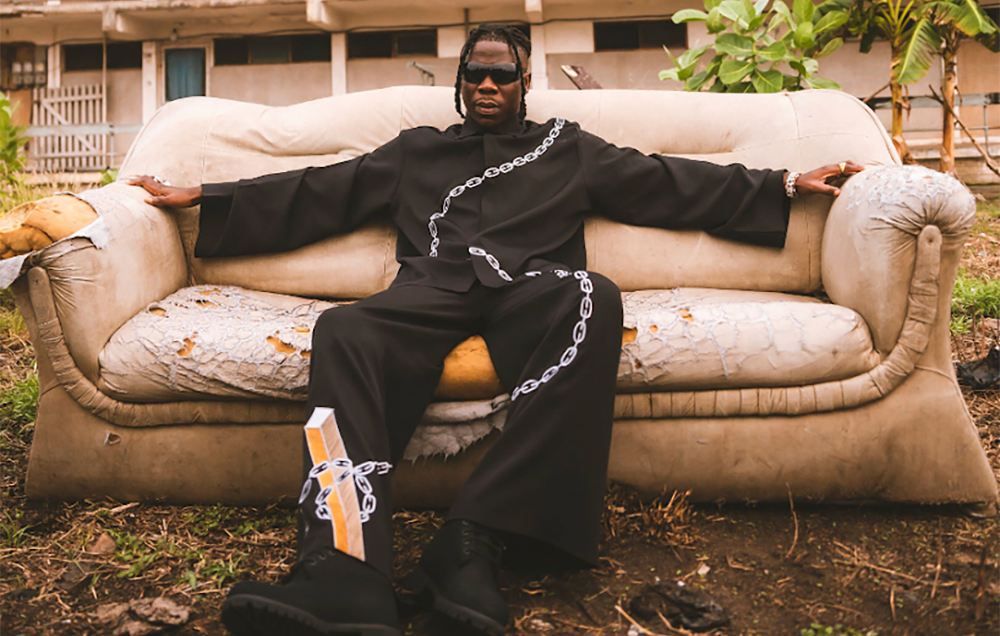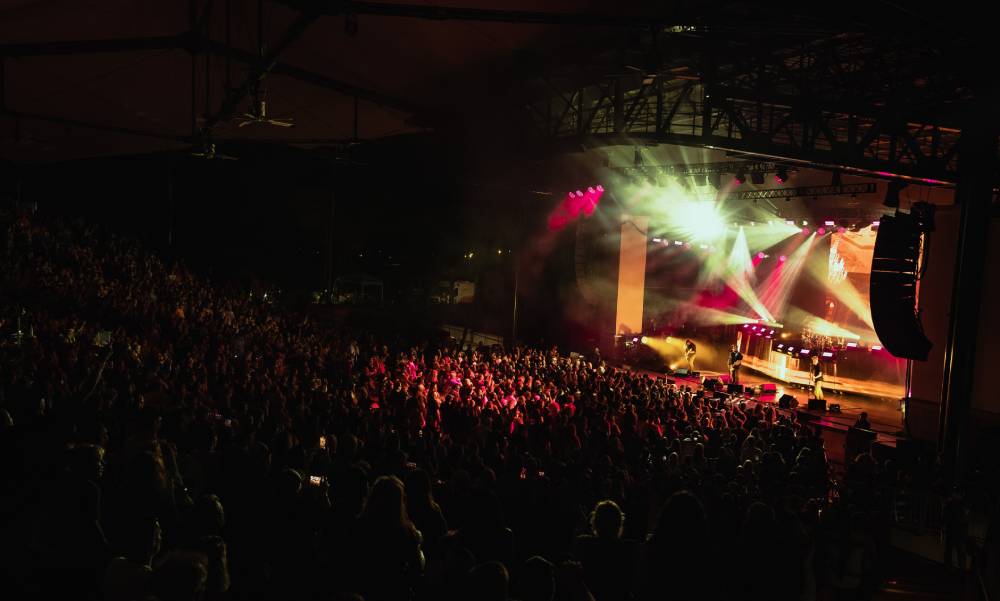This week In the Hot Seat with Larry LeBlanc: Gordy Haab, composer/orchestrator/producer, Gordy Haab Music, Inc.
Gordy Haab has been writing music for “Star Wars” video games for the better part of a decade, and the multi-award-winning video game, film, and TV composer cites Canada’s Rush as being a vital influence in his career.
As a child of the early ‘80s, John Williams’ signature scores of George Lucas’ “Star Wars” films made a huge impact on Haab. He recalls being 6 or 7, growing up in Richmond Virginia, and playing the “Star Wars” soundtrack albums over and over while acting out scenes from the films.
In his teens, after his family moved to nearby Mechanicsville, he played in “hundreds of rock bands,” and was an avid fan of Rush, Led Zeppelin, and Alfred Hitchcock, Stanley Kubrick, and Steven Spielberg films, as well as horror b-movies.
With such “Star Wars” titles as “The Old Republic,” “Battlefront I and II,” “Jedi: Fallen Order,” and now “Star Wars: Squadrons” under his belt, Haab has become a mainspring of the “Star Wars” gaming franchise.
Ever since the birth of Lucas’ first “Star Wars” films, there have been affiliated games, with varying degrees of success and quality. However, each game, along with each film to even today, has had as its core element the sound and spirit of John Williams’ signature scores.
An element, Haab has burned into his DNA.
In 2011, Bioware and LucasArts Entertainment Company released “Star Wars: The Old Republic,” a role-playing video game set over 3,000 years before the events of the classic films. Haab was one of the composers for the game and that led to him being the sole composer of the 2012 Microsoft Xbox follow-up, “Star Wars Kinect.”
Then Haab was chosen over 100 composers to score the ground-breaking “Star Wars Battlefront” game, and a slew of “Star Wars” work followed.
In 2019, Haab and British composer Stephen Barton won for Music of the Year at the 18th annual Game Audio Network Guild Awards in San Francisco, for their score of “Star Wars Jedi: Fallen Order.”
At the inaugural Society of Composers & Lyricists Awards in Los Angeles the same year, the pair took home the first-ever Outstanding Original Score for Interactive Media award, again for “Star Wars Jedi: Fallen Order.”
Earlier this year, for the second time, Haab won ASCAP’s Composers Choice award for Video Game Composer of the Year.
Among Haab’s non-“Star Wars” video game credits are: LucasArts’ “Indiana Jones and the Staff of Kings,” Microsoft’s “Halo Wars 2,” and Activision/AMC’s “The Walking Dead: Survival Instinct.”
Haab’s television and film credits include: MTV’s “The Truth Below,” Lions Gate Entertainment’s “War,” The Oprah Winfrey Network’s “The Judds,” Roadside Attractions’ “Shrink,” ABC Family’s “Greek,” VH-1’s “Scream Queens,” NBC’s “Kath and Kim,” and Endeavor Media’s “At the Edge of the World.”
The list of gaming composers is a short one, and the list of composers as active as Haab working in multiple mediums is even shorter.
Despite his stature in the “Star Wars” gaming galaxy, Haab describes himself as “a terrible gamer.”
Not only did Electronic Arts Star Wars release “Star Wars Squadrons” on October 2nd (2020), but Walt Disney Music released your original soundtrack, marking the first time in the modern “Star Wars” era that a game and soundtrack has been released on the same day.
Yes, for “Star Wars” Squadron.”
Electronic Arts has come a considerable distance in creating modern “Star Wars” games. The company piloted a resurgence from “Star Wars Battlefront” (2015), “Star Wars” Battlefront II” (2017), and “Star Wars Jedi: Fallen Order” 2020) that now continues with “Star Wars: Squadrons” which—whether playing the single-player or multiplayer version—is the most complete “X-Wing/TIE Fighter” simulator ever released to the public.
“Star Wars Squadrons” is a game developed by Motive Studios (the video game development studio and a subsidiary of Electronic Arts) in Montreal. They developed the single-player side of the “Star Wars Battlefront II” game. In “Battlefront II,” you could either play a multi-player or a single-player, and they were in charge of the single-player. So I got to know the audio director there pretty well. They developed this game and EA, of course, published it. The (production) process was probably a year from beginning to end. We had many creative discussions about what the aesthetics of the game would be. We knew that it was going to be a throwback. It has a retro aesthetic. Even the cover art for the soundtrack and the game itself has a retro vibe.
“Star Wars Squadrons,” which is centered entirely around starfighter combat, begins shortly after the destruction of the planet Alderaan as depicted in “Star Wars: A New Hope” in 1977, before catapulting years forward in its timeline to the end of “Star Wars: Return of the Jedi,” released in 1983.
Exactly. So we wanted to fit into that era, even musically. So the creative decisions from the beginning were to do more of a retro throwback type score that felt like it could fit into the earlier films. Even the decision to record it in different (Nashville) studios (with one player, one instrument at a time, every day for 6 weeks, and then piecing it together to build an orchestra) so it would be a little more intimate and dry because the recordings were that way versus (recording at) the Abbey Road (Studios in London) that makes everything sound ten times larger than it is.
It was Electronic Arts’ worldwide executive, and president of music Steve Schnur, who plucked you from a pool of composers to work on “Star Wars Battlefront.”
Being the first “Star Wars” release under an exclusive deal for Electronic Arts with Lucasfilm’s new owner, The Walt Disney Company, a lot was riding on “Star Wars Battlefront” being a success.
Steve has told the story of meeting with the developers at EA’s DICE (Digital Illusions Creative Entertainment) studio in Stockholm, Sweden at which they were evaluating music from about 100 composers auditioning for the gig.
Is it true that Steve didn’t believe you wrote the music you had submitted? That when he returned to Los Angeles, he arranged an impromptu meeting with you at the Coffee Bean & Tea Leaf on Santa Monica Boulevard? That you walked in, and Steve—never shy for words—said, “There’s no way you wrote this. I don’t believe it.” And you replied, “Well, I really did.” A true story?
That is a true story.
Steve is usually a charmer, but he can be combative.
Oh, I love him to death. We have become best friends, but our first meeting was somewhat tense.
Prior to joining EA in 2001, Steve was part of the programming department at MTV, and later an executive at Elektra, Chrysalis, Arista, Arista Nashville, and Capitol. As a creative force, he’s known for putting potential collaborators on the spot.
He definitely put me on the spot. I knew that I was in the running to work on “Battlefront” because I had been talking to Ben Minto, the music and audio director (now studio audio director/sound designer/sound recordist) at DICE, the company in (Stockholm) Sweden making the game. So I knew that I was, at least, in the running. He was really interested in my music. Steve had other designs. I think that he really wanted John Williams to score it.
My understanding is that after sifting through some 100 submitted demos, Steve told DICE developers the three composers that he’d be willing to hire. You were not one of them. Steve then flew to Sweden to convince DICE developers to hire of one of the three composers. But then DICE played him your demo.
Steve went over there (to Sweden), and he said, “Well, if John Williams can’t do it, it’s got to be one of these candidates.” Plan B, right? Ben made him listen to multiple examples from multiple composers, and he kept landing on mine. Asking “Who is that?” He always ended up on me. So he flew back from Sweden, and as he was getting off the plane, he called me saying, “You don’t know me but I want to meet you at Coffee Bean & Tea Leaf by LAX..” I said, “I know who you are, and I will be there in two seconds.” After proving to him that it was actually my music on my demo, I got hired.
While the “Star Wars” franchise has expanded into various films and other media, including television series, video games, and theme park attractions, the music for the “Star Wars” games has been derived from everything that came before it.
What you have done is written original music that seamlessly matches John Williams’ style. Taken his melodies and cues and, in many cases, re-orchestrated, and sonically recycled them to fit the games. Snippets of his original music are inter-spliced with longer, newer works by you. You emphasize his themes and make sure everything pays homage to his original “Star Wars” music.
John Williams has written approximately 50 themes for “Star Wars”– one of the largest collection of themes in film history–consisting of over 18 hours of music. This is music that makes extensive use of the 19th-century Wagnerian idea of “leitmotif,” or assigning a theme to characters, objects or events or situations. As well, the “Star Wars” music catalog contains recognizable newer John Williams, older John Williams, and renaissance John Williams as he continued working on “Star Wars” films.
All this recognizable “Star Wars” music, you are able to work with.
The overall catalog of music relies on the use of the full range of the orchestra, from the highest piccolo notes to solo French horn to full brass section fanfares and, in particular, the weighty use of the trumpet section which creates a sense of significant size and space.
That is absolutely right. The sound, that brass sound, the trumpets, and the horns for “Star Wars” is the iconic (100-member strong) London Symphony Orchestra. They do that sound so perfectly that it is almost in their DNA. Recording in London was certainly the key for the “Battlefront” series because the goal was to have it feel like it fit into the original trilogy. The second one fit more into the new trilogy, and “The Force Awakens” (2015) and beyond. Having that sound was really key.
(Over the decades, the directors, writers, special effects artists, and cast members who made “Star Wars” changed, but the composer was always the same: John Williams, who at 88, has won 24 Grammys and 5 Academy Awards. Teamed with the London Symphony Orchestra, Williams recorded “The Empire Strikes Back” (1980), “Return of the Jedi” (1983), “Star Wars”: Episode I – The Phantom Menace” (1999), “Star Wars”: Episode II – Attack of the Clones” (2002), and “Star Wars”: Episode III – Revenge of the Sith” (2005).
Additionally, Williams and the London Symphony Orchestra recorded such film scores as “Superman: The Movie” (1978), “The Fury” (1978) “Dracula” (1979), “Raiders of the Lost Ark” (1981). “Monsignor” (1982), and “Schindler’s List” (1993).
The London Symphony Orchestra is renowned for it having individual personalities and its fair share of star performers.
It is pretty impressive
Game music has specific requirements as to cue length, pacing and adaptability to gameplay repetition. A well-written cue for a film scene would not necessarily fit into a game’s cut scene or action sequence. Game music is created to be repeatedly listened to over multiple playthroughs, whereas music for film is not. It is a different creative work
Yeah. It really is. There is always this anchor point within the music that is a common thread. The orchestration with the full orchestra as the feature. A lot of modern film scores, for example, the orchestra is just a layer among many players.
Creating a well-integrated score, that adds depth to the characters and the action, is like playing Tetris and fitting everything in.
It is in a way. It is like playing Tetris, but making it seem as smooth and seamless as possible like Rush did with their music. That was the first band that I ever latched onto.
You grew up as a fan of rock music and played in a number of rock bands and orchestras.
I did. My musical background is pretty diverse. I grew up with my dad being a guitar player, and my mom was a singer. Neither a professional but, by the nature of that, I had an exposure to rock music at a very early age, particularity stuff from the ‘70s. Rush was one of those bands that the first time I heard them I was hooked. That is who shaped how I write orchestra music, actually.
Seeing Rush live, I tended to focus on Neil Peart behind his 30-piece drum set.
He was brilliant to watch.
Much as you’d watch the Who’s Keith Moon play. Whereas Keith was chaos, Neil played with precision.
Yes precision, you right. He was a genius, really. My big takeaway from Rush is not only how musical they were, and how thoughtful their ideas were, but two other things. The fact that they were three people making all of that sound in such a coordinated fashion, and it is so musical. That alone is an orchestration lesson for any composer or any musician. That numbers don’t mean as much as smart writing. If you write smart music, three people can sound huge. Part two is that they found a way to make odd, mixed meters sound natural. With music, you can count, 1, 2, 3, 4. These guys were stretching them into five beat patterns or throwing in three little 1/8th notes between, and really mixing up the rhythm. That was a big influence on my writing, certainly in the orchestral realm, because that works really well there too.
Utilizing, as you do, Williams’ original tracks, and then meshing in your original music, and then, maybe returning to one of his original tracks—a process John himself did with his later “Star Wars” scores—is somewhat the lessons learned with meter signatures with Rush that did not a fit meter into the usual double, triple, or quadruple categories, using odd numbers, and unusual beats per measure.
What they did so masterfully, in my opinion, is that they took these odd rhythms and weird mixed meters but they made it feel like it flows. Completely naturally. You never feel like you are tripping over your feet because the beat is getting mixed up. It just feels right. But what they were doing was mixing it up every other bar. Some bars are in 7, and some bars are in 5, and then they’d go back to 4. Then mixing it up, but it never feels like it was jarring or tripping you up. It really is brilliant how they did that, and I think that (Rush) is a big part of my musical DNA.
In utilizing John Williams’ original music, and then mixing in your own original music, you still have to ensure that selections fit, and flow together. And, importantly, you have to create an overall score that results in an emotional response from those playing the game. That to me is where being influenced by Rush’s intricate time meters comes into play.
Yeah, agreed.
At the same time in “Star Wars” music, there are elements inspired by the music of Germany composer/conductor Richard Strauss, and the Russian-born composers, pianists, and conductors, Igor Stravinsky, and Sergei Prokofiev.
Growing up, you almost certainly studied these composers, as well as John Williams, but also Bernard Herrmann who wrote scores for the Alfred Hitchcock films, including: “The Trouble with Harry,” “Vertigo,” “North by Northwest,” “Psycho,” and “Marnie.” He also composed scores for “Citizen Kane,” “Anna and the King of Siam,” “The Day the Earth Stood Still,” “Cape Fear,” and “Taxi Driver.” His music for the 1960 film “Psycho” still sends a chill up my spine.
Of course, it does because it was so unique, and it had not been heard in that context before. Things like that. Sure there were the Bartóks (Hungarian composer/pianist/ethnomusicologist Béla Bartók) that were interesting in extending techniques for the strings prior to that, but nobody had ever put it in a film in that way, and it really did strike a chord.
Pun intended.
Bernard Herrmann is in my top three composers of all time in film. He was highly inspirational to me. I grew up loving Hitchcock films. I still do. I’m a big fan of horror films in general. In fact, when I moved to Los Angeles in 2001 for grad school, my goal was not to work on high fantasy, action-adventure type films. I wanted to score horror films. For the first 10 years of my career that was primarily what I did.
What horror films did you work on?
I’ll cite just one, “Behind the Mask: The Rise Of Leslie Vernon” (2006), simply because it has become a cult classic with horror fans, whereas the rest of the films have smaller followings, if any at this point.
What is priceless about providing music for low budget horror and independent films is that you are both working. and learning your craft. You scored the “Star Wars” cult classic fan film “Ryan vs. Dorkman 2” (2007) that was shot in 24p high-definition, as opposed to the original’s 30p standard definition, and recorded the score with a 57-piece orchestra at Capitol Studios in Hollywood. Your work caught the attention of some people at Lucasfilm who were making an Indiana Jones game at the time, and you ended up getting that gig.
Exactly. I have a personal love for horror films in general. I’m a big fan of horror films. The music in a horror film is so important and pivotal to the story and to how the audience feels. It is almost like a character in itself. It creates the scares. It creates the tension. It creates the mystery. The music in horror films has such a great role in making an impact on the audience. It was never my original reasoning and goal to work in high fantasy films and games. I got lucky and found my way on to an “Indiana Jones” video game (“Indiana Jones and the Staff of Kings” in 2009) that led to a “Star Wars” video game (“Star Wars: The Old Republic” (2011), and then on and on and on. Now here I am.
Film experts speak of the ‘40s and ‘50s as the Golden Age of film music with the likes of Bernard Herrmann, Alex North, Max Steiner, Dimitri Tiomkin, Franz Waxman, Erich Wolfgang Korngold, Alfred Newman, and Miklós Rózsa.
In the ‘60s and ‘70s’ Golden Era, there was Elmer Bernstein, Henry Mancini, John Barry, Nino Rota, Ennio Morricone, Maurice Jarre, Michel Legrand, David Shire, Ernest Gold. Bill Conti, and Jerry Goldsmith.
Oh, he’s one of my favorites.
In order who are your three favorite film composers?
John Williams, Jerry Goldsmith, and Bernard Herrmann
One of my favorite film composers is British jazz pianist Roy Budd who composed the music for Michael Caine’s incredible 1971 crime film,“Get Carter.”
Great stuff. Memorable. Thematic.
In recent years, such celebrated film and TV composers as Mike Giacchino, Hans Zimmer, Mark Mothersbaugh, Paul Oakenfold, Chris Lennertz, Sean Callery, Christopher Young, Tyler Bates, Steve Jablonsky, John Debney, Inon Zur, and Ramin Djawadi have worked in the gaming industry.
Scoring music in games, film, and TV is an absolutely wonderful field to be involved in.
Yeah, I completely agree. I’m fortunate for what happened in the early part of my studies. I had decided that I was going to go to the Manhattan School of Music (in New York City) for graduate school. I went up there for a very short amount of time. One of the teachers I had there said, “Hey man, look if you are really interested in doing film you are in the wrong city. Look at USC (University of Southern Thornton School of Music) because they have a film scoring grad program that is one year long, and it’s more like a trade program. You get to record with an orchestra every other week, and you can meet all of these iconic composers. They come in for two-week blocks.”
So I had Elmer Bernstein and Jerry Goldsmith come in for two weeks. All of these classics (film music composers). A year after I graduated (with a master’s in Scoring For Motion Pictures, Television, and Other Media) all of those iconic Golden Era composers started passing away. I feel like one of the luckiest people on the planet that I was able to study under them in the very last years of their lives, and really get some great information.
In 1999, you had earned a Bachelor of Music in jazz composition at Virginia Commonwealth University in Richmond. The focus there was purely on instrumentation, not graphics. I’m surprised you didn’t apply to Berklee College of Music which has a film scoring department. Such acclaimed film composers as Howard Shore, Alan Silvestri and Ramin Djawadi attended Berklee.
I thought about Berklee. I looked at Berklee as an option for grad school, and the Manhattan School of Music, as I said. And I looked at Juilliard (In New York City). I looked at all of the obvious big music schools to see where I landed in all of these things. Berklee has a great program in film scoring, but USC’s is second to none. And it’s in Los Angeles.
So much of Los Angeles is centered on entertainment with the film industry at its core. Film studios, sound stages, production houses, management, recording studios, everything is there.
The proximity is important. Location. And it’s a city that never stops.
Video games are developed over two or three years. At what stage are you brought in?
This is one of the interesting differences between working in games and working in film. In films, the composer is usually the last thing that happens. They have already shot the film. They have already edited the film for the most part.
It so often comes down to how much money is left in the budget for music, and how quickly the composer can create the music.
Basically, yes. On games, they know how vital the actual technical side of the music works. All of the little tricks, and the puzzle pieces working seamlessly together. How important that is. The composer is usually brought in pretty early on. For a video game, say a three year production, the composer will usually start on the second year and work all the way through the final year leading up to the release.
The first meeting after you have been hired for a new game who would be sitting at the table with you?
If it was an EA project, Steve Schnur would be sitting at the table with me. Whoever the audio or the music director is from the developing company would be at the table. And, oftentimes for these projects, they will have representatives from Lucasfilm, as well, who handle the video game side of their company. All of these people are stake-holders, and they all have a say. It is usually that little group of people which is a relatively intimidating group. I’m not going to lie. It’s a lot of power being wielded around.
What would be the concerns of Lucasfilms which owns all the rights to “Stars Wars” properties?
Well, I think that their concerns are always pretty standard, even for other games as well, but for “Star Wars,” in particular, their concern is that it fits into the aesthetic of the franchise. What they are most interested in is making sure whoever the composer is that they aren’t trying to do their hip hop version of “Star Wars.”
At the same time, you are hardly alone. For “Star Wars Jedi: Fallen Order,” for instance, you worked closely with audio director Nick Lavier and his team at Respawn Entertainment. Nick came in with a very strong vision of wanting to develop music that had never been explored before in the “Stars Wars” gaming franchise. In essence, his vision became your vision. You had to buy into his vision.
Yes, exactly, and vice versa. It is always a collaborative process on some level although there is a hierarchy.
Whoever is overseeing the game at Lucasfilm?
That’s the hierarchy.
But there was also Nick encouraging you and Steve Barton to try new approaches for the score.
And it’s great when that opportunity comes up. That is what is so great about Nick. He has this. He came to the table with a vision of seeing how far we could push the line with the “Star Wars” aesthetic. We were able to push it pretty far, even right down to that we all decided unanimously on featuring this Mongolian metal band.
(Mongolian folk-metal band the HU. contributed the song “Sugaan Essena”—which translates “The Black Thunder” which is a song is about a warrior’s heart and spirit as the power of thunder. The HU not only wrote the tune specifically for “Star Wars Jedi: Fallen Order,” but they also penned its lyrics in a fictional language authentic to “Star Wars” with the guidance of Lucasfilm and Respawn Entertainment.
“We’d been on a voyage of exploration trying out various approaches to a band for Cal Kestis, the main character in ‘Star Wars Jedi: Fallen Order,’ when players first meet him,” explained Nick Laviers. “Lucasfilm helped us hone in on a direction that was cool, but also felt very ‘Star Wars’ and authentic to the time period of our story. During the process, we heard ‘Wolf Totem’ by the HU, and a light bulb went on. The music had otherworldly-sounding vocals, and unfamiliar ethnic instruments that could be alien, all on top of a classic rock backbone.)
A concern with almost any game or film sequel is to make the music slightly different without losing the authenticity of the original score.
Yes. That’s the key. That is always the key for me. Even on games or films based on an existing franchise, where there is already an established music aesthetic that people are used to and, at least on some level, they are expecting it to feel the same way. The challenge for me is to find a way to stay somewhat within the perimeters of that aesthetic, but also interject my personal aesthetic. My own music. That’s always the challenge, but it is always the fun part of the challenge. How can I do what I want, but make it fit into the “Star Wars” world or the “Halo” world of whatever game that I am working on? I tend to work on a lot of these games that are based on either existing film franchises or even on an existing video game franchise in some cases.
(“Halo Wars 2,” published by Microsoft Studios and released in 2017 on Windows and Xbox One, was the first game soundtrack in 12 years to be recorded with American Federation of Musician players on Twentieth Century Fox’s Newman Scoring Stage. Haab first conducted an 80-piece orchestra, and for the final mix, integrated a 20-piece choir recorded at Skywalker Sound, and then meshed electronic music created by Finishing Move Inc., the award-winning, UCSC grads production team of Brian Trifon and Brian Lee White.)
My daughter loves “Halo 2” because it has such a strong female lead in the strike team, and because it is a linear game, in that it follows a strict path for the player with very little deviation. I could never quite grasp “Halo.”
I have a hard time playing games, in general. I’m a terrible gamer. I enjoy it, but I am not good at it.
To develop musical ideas, you will sing in the shower, and with a wax pen you write down musical ideas on tiles. You then take a picture of what you have and later transcribe it. Mostly, however, you write with pencil and paper?
I do. I still write with pencil and paper. I am old-fashioned in that sense.
What are you writing down?
I write down everything. So I have a piece of paper that I have 9 staves going across. The bottom will be strings, top of the winds, and so on. I will have a very reduced-down sketch, and eventually, when I go to orchestrate it, I will just flesh it out into a bigger form. My ears just work better when I’m just pencil and paper. Sometimes, I don’t even use a piano. I use my ears and just write it (the music) down because I hear it.
As you write, you can hear the music in your head?
Yeah, I always do. I hear it in my head, and then I write straight to page. Basically, I try to eliminate as many obstacles in between my brain, and the real world so that (music) goes straight to my brain to the page. That’s the shortest distance. The moment I start adding computers, and technology in…..“This computer crashed” or “This sound won’t load”… If any of that happens, all of my ideas are gone. So for me, the fastest way to get it out is either doing that or sometimes I use my phone. I record myself singing, and transcribe it later. Any little tricks I need to come up with to get it out quickly, that’s the goal. Whatever works.
Do you write best to deadline?
(Laughing) I always write best to deadline, yes. If I didn’t have a deadline, I probably wouldn’t write anything. I’d be on the tennis court 24 hours a day.
With “Star Wars” projects, the blank page is challenging because you are not just trying to write themes and cues, you’re trying to write themes and cues that will stand up against the most iconic film scores ever written.
It is intimidating. I wouldn’t disagree at all.
You work in some of the most spectacular recordings studios in the world including the Synchron Stage Vienna, AIR Studios Lyndhurst Hall, and Abbey Road Studios in London; and in one of your favorites, the Newman Scoring Stage in Century City, California on the 20th Century Fox lot.
That is a studio that I have worked in often. If I am working in L.A., I will typically go to Fox’s Newman Scoring Stage. I really like the sound of that room. It is the perfect combination of being big and roomy, and feeling like it’s live. It has its own natural reverb. But it also has its intimacies. You get a bit more of a close sound with the players. It’s a nice balance. I love that room.
Built in the 1920s as a filming stage, the studio, previously known as the 20th Century Fox Scoring Stage prior to its reopening in 1997, was converted into a recording studio when composer Alfred Newman was head of Twentieth Century Fox’s music department. The studio has seen two substantial renovations. In 1997, a new control room was put into service. By contrast, the live room remains almost completely in its original condition. It is almost 700 square metres.
That sounds about right.
In contrast, the Abbey Road Studios, courtesy of the EMI Archive Trust, has an impressive vintage microphone collection, the Newman Scoring Stage, apart from a couple of vintage RCA ribbons microphones, predominantly makes use of current mikes.
Conversely, the Abbey Road Studios has kept virtually every piece of equipment ever used, and all production notes that provide a fascinating historical timeline of its 90 years past.
Abbey Road is a combination of a world-class recording studio, and a museum, if you will. They have every microphone that they have ever used on any project, and all of these things are operational. You walk down the hallways, just the corridors, and the studio, and they will have these old analog tape machines, and analog mastering consoles, all of these things, just laying around. These giant plate reverbs that are taller than you and I. They keep everything, and it is all still functioning. For example, you can go in there, and record a score like “Star Wars,” for example, and say you want to sonically fit it with the original “Star Wars” score, they will recall the exact same microphones used for that recording, the same placements on the floor etc. So they have everything that they have ever used and have the access to recall (production) sheets so they can pull up the exact layouts of the floor. It is very fascinating.
(The Abbey Road Studios was established in 1931 by the Gramophone Company, a predecessor of British music company EMI.)
Abbey Road’s Studio Two is where the Beatles recorded most of their music for EMI in the 1960s.
You can walk into Studio Two which is the smaller of the two big rooms, and they have the piano that John Lennon used to sit down and write at. And it has a cigarette burn on the edge where he had put a cigarette down; the ash just hanging off the edge as he was writing, and losing time thinking about ideas, and it just burned down and burned a hole in the piano. And it’s there. Things like that are just so fascinating to me because it’s just like a little mark in history of a great moment.
I was so impressed being in Capitol Studios in Hollywood where Nat King Cole, the Beach Boys, and Frank Sinatra recorded. Going down that long hallway to the three main studios, A, B, and C, you feel the history of the studio, if only because of the large-scale photographs of many of the artists that have recorded there.
The history. In my opinion, that is the closest equivalent to Abbey Road that we have in Los Angeles. You walk down the hallways, and you see these photographs of Frank Sinatra in the same room that you are about to walk into; singing the greatest hits that we have all known our whole lives. You just think about that, and it’s so amazing to imagine that you are in the same room, breathing the same air as these greats when they were recording these greats scores or songs or whatever.
These are the type of things that strike you at 3 A.M. while recording
Exactly. It is always awe-inspiring and amazing to be part of that. If you are in there and you are recording something, you are becoming part of that history. That is just daunting to think about, but it’s really cool.
Microsoft and Sony are set next month (November) for launches of their next-generation game consoles, respectively, the Xbox Series S, and Series X, and the PlayStation 5 and PlayStation 5 Digital Edition.
However, gamers are already preparing for cloud gaming that could eliminate the need for upgraded game consoles, as it would enable gamers to stream games over the internet to devices like their smartphones, smart TVs, and laptops.
(Microsoft’s VP of gaming Phil Spencer recently told Yahoo Finance’s On the Move that, with cloud gaming, the game industry is undergoing the same kind of transition that Netflix created for the TV and movie industries. My TV is with me wherever I go. My music is with me wherever I go. I’m in control of the experience, and I think gaming is going through that same transformation.”
Microsoft currently offers gamers its cloud gaming platform, xCloud, while Sony is in the process of developing its own service. Google currently offers the Stadia cloud platform, while Nvidia has its GeForce Now service. And Amazon now has the new Luna cloud gaming platform.)
Will cloud gaming change the aesthetic of music being created for games, if only because of greater access through more devices?
I think that it will in some ways but, to be truthful, the reason that they are moving more to that (cloud) model is because technology has changed so much. With the video games, for example, that I grew up with in the early ‘80s, like Pac-Man, and Mario Bros. the music was really bad FM synthesis type stuff (a form of sound synthesis whereby the frequency of a waveform is changed by modulating its frequency with a modulator) doing little beeps and blips. There was still music, but it had to be music that could play from within the disk itself.
Game soundtracks have grown from the use of Prophet, Oberheim, Arp, Moog audio synthesizers, and the rudimentary beeps and blips delivered via home computers, and consoles.
Matthew Belinkie, in his article “Video Game Music: Not Just Kid Stuff,” claimed that as many as 66% of college students in 1999 could hum the Super Mario Bros. main theme, officially known as the “Ground Theme” or “Overworld Theme.” It was one of 6 themes composed for the game by Nintendo sound designer Koji Kondo in 1985.)
There’s been considerable evolution over two decades. Today’s video game scores match the quality of Hollywood films. But we all continue to love the sounds of such classic games as Pac-Man, Tetris, and Super Mario Bros.
I love those sounds. They are great. They are retro. But the reason that they existed that way was simply because it had to be something that was a very small data footprint to put on the disk. So putting audio files on the disk would have been too big. Now fast-forward to the second era where the disks can hold more content. Then you start putting recordings of orchestras on the disk. Now we are in a different place, where streaming data, the bandwidth that we all have in our own homes for internet, opened up the world of possibilities. Now you can have thick content that is just streaming. So there is a server holding all of the information rather than a CD that you place into your Xbox or Play Station. It really changes the type of content that we will be able to produce for games. I think that you will have even more content for games. It opens up a world of possibilities to have even more music in these games because they can live on a server. It can stream directly, and you don’t have to worry about data space. Now the sky is the limit.
For music in film and television, a composer works to a set timeline and must support a particular narrative while steering clear of dialogue. They usually draw from a specific palette of instruments, and scoring occurs from one point to another on the timeline. Film composers work vertically whereas game composers have an open-ended canvas, and they can explore their creativity laterally
The game composer must also come up with music that drives the game while enhancing the gaming experience. They try to come up with music that creates greater gameplay and prompts players to discern how great their gaming experience was.
Non-linear gaming scores, in particular, while challenging, also provide a composer with tremendous creative freedom.
Yep. That is probably the largest challenge of writing music for games because in most ways, as least aesthetically and musically, it’s not that much different than writing for a film. The end result should feel like a cinematic score that is accompanied by this narrative that you just happen to be in control of as a gamer.
A gamer gets to go down all sorts of rabbit holes, and you as the composer must cover all that activity off.
That’s it exactly. That is the challenge. That is where the real technical challenge comes in because you have to account for every possibility that a player can encounter, and write music that could accompany it. It is not just as simple as saying, “Okay, well if a player goes through door #1 we have to have music that is for door #1 or door #2” and so on. You have to also have logical places in the music for it to transition into music behind door #1. And what I will typically do is that I will write a piece of music that could potentially loop on itself seamlessly until the game engine says, “Player is entering door #1.” And then it will find the next logical downbeat in my music to trigger a transitional element that I wrote that would take you into the music for door #1.
It is constantly looking forward and thinking about where the player is moving, and placing little markers along the way. If the player crosses one of these thresholds, the audio system knows that you have to ramp up the intensity of the music.
Most people are unaware of the quantity of music in a game today.
In a film, if you have a two-minute scene, you are doing two minutes of music. For a video game, if you have a two-minute scene, it could be two minutes, it could also be 30 minutes depending on the player because there are various levels of ability to play. Some people like to explore more, and some people like to get right to the point.
Plus as the composer in the “Star Wars” franchise, you provide themes for different characters, as you first did for the Wookiee Chewbacca (aka Chewie), and the Rodian bounty-hunter Greedo Tetsu, Jr. So there are musical cues for characters as well.
Yes, exactly. In fact for “Star Wars Battlefront 1, and 2,” both had the same system in that way, depending on the character that you select to play at. What I might hear as a player in my living room where I am playing can be completely different to what somebody in Stockholm playing the same game is hearing at the exact same time. If they entered a game as Darth Vader in Stockholm, for example, the player there is going to hear Darth Vader’s theme introduced as a cue when Vader enters the scene. At my end, if I’m playing at the C-P3O (short for Cyborg 3 Protocol) level, I will hear the C-P3O fanfare intro. It is always finding the next logical downbeat to introduce that theme. It has to be in the key of what is happening around it so it sounds musical. It is like building a puzzle; sort of reverse engineering a crossword puzzle.
“Star Wars Jedi: Fallen Order” released for Windows, PlayStation 4, and Xbox One on November 15, 2019, is arguably the most ambitious score ever recorded for a “Star Wars” game.
You and Stephen Barton spent 14 days recording a total of 8 hours of music with 300 musicians at the Abbey Road Studios. The game was recorded and mixed in 7.1 surround sound.
Had you and Stephen worked together previously? I know of his scoring of such games as “Call of Duty 4: Modern Warfare,” “Watch Dog Legion,” Call of Duty 4: Modern Warfare,” “Titanfall” 1 and 2,” and “Apex Legends.” Who came up with the idea of the two of you working together?
Steve and I had never worked on a “Star Wars” game before. That was his first one. The technical reason that we were both put in the same room together was Steve Schnur was very comfortable with me working in the “Star Wars” world because I had done it with him for quite a while. The better part of the decade. And Respawn Entertainment was very comfortable with Stephen because he had been working with them for quite a while. So everybody thought, “If we put these two together…..” And to be honest, it made sense too because the task was to write 8 hours of music. That’s a lot of music. So having two people do it certainly made that more realistic.
You each were able to offer something unique. You each have such distinctive styles. Obviously, the goal was to ensure the music still fit the “Star Wars” music aesthetic, and fit the narrative of the story, but also that it be striking on its own terms. The two of you successfully meshed your distinctive styles, Even so, musical tag-teaming can be a high-wire experience.
You never know when you get into a collaboration whether or not it will work. Are you going to get along with the other person? Do you even line up aesthetically with the music? But with Stephen and I, every place that I had a hole in my abilities, he filled it, and vice versa. It worked out really well. We collaborated really well. We see eye to eye, musically. We both had a vision. And we had Nick (Laviers) at the helm sort of guiding the vision and, even in some cases, selecting, “This is more like your cup of tea. Gordy wants to work on that. You can work on this.” Stephen and I would write things together, and share those things together amongst each others’ cues. It really is a great collaboration. You never know how those things are going to work.
As with most musical collaborations, sharing thematic ideas between each other, passing ideas off of each other, and inspiring each other, it’s hard to recognize who wrote what.
Honestly, I can’t even tell anymore. But that was the goal. The goal was to make it sound so you could never tell who wrote what.
The next thing you know the pair of you are at the inaugural Society of Composers & Lyricists Awards on January 7th, 2019 at the Skirball Cultural Center in Los Angeles taking home the first-ever Outstanding Original Score for Interactive Media award for “Star Wars Jedi: Fallen Order.”
Stephen concluded his acceptance speech with the provocative statement, “We’re never giving up our writers’ share!” — referencing Discovery Network’s demand that composers surrender all future writer royalties. The remark naturally drew cheers from the 300 attendees.
I loved him for that. That was just amazing.
That was deemed a significant cash grab by Discovery Networks.
Big time. A huge cash grab. A little bit of a ballsy move on Stephen’s part. I really appreciated that he was able to go there.
(Discovery Networks had proposed eliminating the vast majority of royalties paid to the songwriters creating music for its shows. Beginning December 31, 2019, Discovery intended to move to direct source licenses, which would have meant composers would no longer collect U.S royalties through ASCAP, BMI, and SESAC for all future and past work — they would only collect upfront fees and foreign royalties. If they didn’t take the deal, Discovery planned to strip the composers’ music out of existing shows.
Discovery Networks airs some 8,000 hours of original programming annually on Discovery Channel, Animal Planet, HGTV, Food Network, and other channels across the globe.
A group, backed by 6,800 composers, successfully launched a social media campaign against the plan by Discovery Networks, calling it a threat to composers’ livelihoods, and intellectual property rights.)
Normally, when a composer works as you do on a work-for-hire basis– works subject to copyright that are being created by you as an employee as part of a job—for film and TV and games, they give up their copyright and publishing rights to the client. Composers, however, retain the songwriter’s share.
Meanwhile, Amazon, Spotify, Deezer, YouTube, and Pandora are now lobbying to pay as little to publishers and songwriters for the music that drive their businesses
Exactly, and I will be completely frank with you. I’ve seen nothing from any of those performances or streams. It seems like you have to have 100 million plays for a couple of cents or something like that.
YouTube seems to be the worst offender.
You are right. You are absolutely right. I can point you to the music there. People strip the music out of videos, and they put it up on YouTube. So all of the music from the “Battlefront” series is exported onto YouTube, and each one of those tracks, on average, has three or four million streams over the course of 9 hours of music. The vast amount of times that music has been streamed, but there’s no royalty income in that for me because it was put up there illegally. Disney owns it. Disney didn’t put it on YouTube. Users of the games stripped it and put it up.
The Walt Disney Studios retains the master and publishing rights of all “Star Wars” properties. Why isn’t it going after YouTube for sharing the videos if they are being illegally placed? Or are the infringements so massive that it’s like playing whack a mole?
It is hard to catch it all because the internet is vast. They are going after it harder now, particularly since they began releasing official soundtracks for all of these games.
Working as you have on a multitude of “Star Wars” projects, which is like working within a bubble world of its own, is there a danger—or do you recognize that there is a danger—of you being known as, “That ‘Star Wars’ Guy,” would limit you in attracting clients for other work?
Well, it’s a very fair point, and something always on the forefront of my mind is making sure that I’m trying to diversify the types of projects that I work on. At the same time, you can’t bite the hand that feeds you. So if “Star Wars” keeps coming back to me, I’m not going to say “no” to that because it’s great to have that work.
Well, you live in Los Angeles where the median home value run to $1.1 million. Real estate there is pricey.
Exactly.
How did you come to have a conversation about “Star Wars” and John Williams with country music star Garth Brooks in 2015?
Steve Schnur invited me to an event while I was in Nashville recording. It just so happened Garth Brooks was there. Steve and I both summoned the nerve to introduce ourselves. Steve, as he does, introduced me as the composer for all things “Star Wars Video Game” related, and Garth responded with something like, “Cool, I’m good friends with John Williams,” which spurred a fun conversation.
What project are you presently working on?
I’ve been working on a film for the better part of the year. I’m not allowed to say what the film is which is unfortunate, but they haven’t announced it yet. I can tell you about it. It is a Chinese production film. It is a huge budget blockbuster movie in China. A period piece set in ancient China. It has been absolutely fantastic. I think that the closest description of comparison is it being “Lord of the Rings” meets “Game of Thrones” kind of thing. A big war movie, but it has a lot of high fantasy as well.
Are you the only composer involved?
I am the only composer involved. It was quite the undertaking. For the first year of working on it, they flew me to China three times to tour me around the country and introduced me to ancient Chinese instruments, and the best players in the world of those instruments. For personal concerts just for me. The only person in the audience listening to this person performing. Then I got to ask questions about the instrument. I spent a year studying ancient Chinese music, and then came back here (to Los Angeles) and started on the film. I wrote this giant epic orchestral score that features ancient Chinese instruments, and ancient Chinese harmonies. It’s such a good project and so much fun.
For the film, you’ve been recording in different studios literally all over the world. Chinese drums in Shanghai, ancient Chinese instruments in Beijing, brass, and more percussion at the Air Studios Lyndhurst Hall in London, and strings and woodwinds at the Synchron Stage in Vienna.
At one point, there 12 people on Zoom from all over the world source connecting for audio and video streaming directly into your studio.
This was your first time recording at the Air Studios Lyndhurst Hall?
Yep, it was my first time at Air Studios. I have recorded at Abbey Road close to 50 times, but never at Air
For the film, you worked with both John Kurlander and Fei Yu. John—who joined the team at Abbey Road studios at the age of 16; his first major assignment being as the assistant engineer on the Beatles “Abbey Road” album—Is best known for engineering and mixing “Lord of the Rings: “Fellowship of the Ring,” “The Two Towers,” and “Return of the King.”
Yes, being the mixer for “Lord of the Rings” is quite honestly why we brought John on to this film. It’s a similar style of movie, and the director wanted a similar approach to the music mix. Fei Yu is a scoring and music supervisor in China and LA. She and I worked together in 2016 on a Chinese video game (developed and published by NetEase) called “The Land Of Glory.” We enjoyed working together so she pitched me on this film.
There’s the argument that the first plucked stringed instrument came from China. The ancient Chinese zither, known as the se, dates back 2,700 years from the Chinese province of Hubei.
That wouldn’t surprise me whatsoever. I absolutely loved being in China. I just thought it was such a great place
Was working in China an eye-opener in terms of how the Chinese approach music?
It was completely an eye-opener because harmonically they think very differently about music there, and it is very much rooted in very original forms of communication. Even on the battlefield, there were certain instruments that they would play that would signal a certain thing to the troops, and those things evolved into music that people would listen to for enjoyment. I found all of that very interesting. Honestly, the roots of many instruments that we know are based on Chinese instruments. Like the drums we are used to hearing, are really Chinese drums.
The Chinese drum is one of the oldest percussive instruments dating back 4,000 years ago from the period of the Shang Dynasty (1600 to 1046 BC). Historically, Chinese drums have been used in traditional and religious celebrations, and also during warfare to command armies.
Things that I never imagined existed, I discovered there. I had never heard of the sheng. It’s like a baby pipe organ that you play as a wind instrument. It has all of these bamboo pipes—24 of them—that stick upright, and a mouthpiece like you’d have on a tuba. You blow into the mouthpiece, and you place your fingers on all of the various keys that close holes on the pipes. It is the opposite, say for a clarinet, when you push it down it changes the pitch. In this case, there’s no air going through that pipe until you push the button down, and air goes through. I was blown away by that. It featured a lot in this score because I thought it was so interesting and colorful, and it blends with the orchestra really well. It’s just fascinating. There were so many things like that I had never heard of before. It was an eye-opening experience.
(The sheng is a Chinese mouth-blown free reed instrument consisting of vertical pipes. The history of this polyphonic instrument dates back to 1100 BC, and it is the ancestor of all free-reed instruments such as the accordion, the mouth organ, and the free-reed stops on the organ.)
View the sheng at: https://www.youtube.com/watch?v=iJVCZajmEL4
Larry LeBlanc is widely recognized as one of the leading music industry journalists in the world. Before joining CelebrityAccess in 2008 as senior editor, he was the Canadian bureau chief of Billboard from 1991-2007 and Canadian editor of Record World from 1970-80. He was also a co-founder of the late Canadian music trade, The Record.
He has been quoted on music industry issues in hundreds of publications including Time, Forbes, and the London Times. He is a co-author of the book “Music From Far And Wide,” and a Lifetime Member of the Songwriters Hall of Fame.
He is the recipient of the 2013 Walt Grealis Special Achievement Award, recognizing individuals who have made an impact on the Canadian music industry.




















